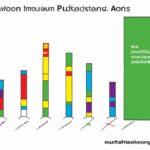The Atkinson index helps measure income inequality within a population, indicating how wealth is distributed. Governments use this data to address economic disparities and inform policy decisions. Researchers analyze trends over time to assess the effectiveness of various interventions. In developing countries, the index highlights areas needing targeted support, aiding in poverty alleviation efforts. By focusing on the most impacted groups, authorities can tailor programs for maximum impact. Implementing the Atkinson index in social programs promotes fairness and equity, advocating for social justice principles in resource allocation. Its practical applications drive inclusive growth and reduce societal inequalities for a more balanced society.
Table of Contents
- Calculation method for Atkinson index
- Definition of Atkinson index
- Examples of Atkinson index in real-world scenarios
- Interpretation of Atkinson index results
- Limitations of using Atkinson index
(Atkinson Index)
The Atkinson index helps measure economic inequality within populations. It provides insights into income distribution by factoring in how individuals at different wealth levels influence overall inequality. Policymakers use this metric to make informed decisions on redistributive policies aimed at reducing income disparities. By utilizing the Atkinson index, governments can better understand the impact of their policies on various socioeconomic groups and make adjustments to promote more equitable outcomes. For instance, it can help identify specific areas where interventions are needed to uplift marginalized communities and ensure a more balanced distribution of wealth. Additionally, businesses can use the Atkinson index to assess consumer purchasing power and tailor their marketing strategies accordingly. This can lead to more targeted and effective campaigns that resonate with different income segments. Overall, the practical applications of the Atkinson index extend beyond theoretical research to real-world scenarios where it plays a crucial role in shaping economic policies and business decisions. Its ability to provide granular insights into income inequality makes it a valuable tool for promoting fairness and inclusivity in society.
Calculation method for Atkinson index
The Atkinson index is a popular tool in economics that measures income inequality within a society. When it comes to understanding this concept, the calculation method for the Atkinson index plays a crucial role. Imagine you’re peering into the complex web of societal wealth distribution – this method acts as your guiding light.
To delve into how we compute the Atkinson index, we must first grasp its formula intricacies. The formula involves taking each individual’s income and adjusting it based on their position in relation to an inequality aversion parameter. This parameter reflects the level of societal concern for reducing income disparity – a higher value indicating greater sensitivity to inequality.
Picture yourself crunching numbers, tweaking variables with care like pieces of a delicate puzzle. The process requires not just mathematical precision but also a deep understanding of social dynamics at play.
As you calculate away, remember that the Atkinson index doesn’t stop at mere numbers; it embodies real people and their livelihoods. Each digit represents someone striving for a better life or grappling with financial challenges—a stark reminder of the human stories behind statistical figures.
The beauty of this calculation method lies in its ability to capture nuances beyond basic metrics. It acknowledges that not all disparities are equal – some hit harder than others, leaving lasting scars on societal fabric.
So when you wield the Atkinson index formula, envision yourself weaving together threads of data and empathy. You’re not just solving equations; you’re unraveling narratives of hope and struggle woven into every data point.
In essence, mastering the calculation method for the Atkinson index isn’t merely about crunching numbers—it’s about embracing empathy and insight while navigating through realms where economics meets humanity head-on.
Let your calculations reflect more than just arithmetic proficiency; let them mirror your compassion for those affected by economic inequalities lurking beneath surface statistics—theirs are stories waiting to be heard amidst formulas and figures.
Definition of Atkinson index
The Atkinson index is like a magnifying glass that zooms in on income inequality, shining a spotlight on the distribution of wealth within society. It’s not just about numbers; it’s about fairness or lack thereof, revealing how resources are shared among different individuals. Imagine a room filled with candy jars – some overflowing while others barely have any treats inside. That’s the essence of what the Atkinson index tries to capture – the imbalance between the haves and have-nots.
When economists talk about this index, they’re essentially delving into how much weight we should give to those at the bottom of the financial ladder. It’s like asking: Should someone struggling to make ends meet be valued less than another who swims in riches? This moral dilemma lies at the heart of discussions around income disparity and social justice.
To calculate this index, you need dependable data on income distribution across various segments of society. Every penny earned counts here; no one slips through unnoticed. By applying a mathematical formula weighing incomes differently based on their position in society, analysts can paint a picture of inequality that goes beyond mere averages.
Think of it as an X-ray for societal well-being – revealing fractures and gaps that may go undetected by merely looking at GDP numbers or per capita income figures alone. The Atkinson index throws light on hidden corners where poverty lurks silently amid affluence, stirring emotions and prodding policymakers to take action.
Picture an artist skillfully blending colors on a canvas – each hue adding depth and meaning to the overall masterpiece. Similarly, when economists use the Atkinson index, they are infusing vibrancy into dry statistical tables by giving voice to those silenced by economic marginalization.
In conclusion, understanding what lies beneath these calculations isn’t just about crunching numbers; it’s about acknowledging human struggles and aspirations entwined within every data point plotted on graphs showcasing inequality trends over time.
Examples of Atkinson index in real-world scenarios
In real-world scenarios, the Atkinson index is a powerful tool that unveils economic inequality in its raw form. Let’s dive into some examples to see how this index plays out in practical situations.
Imagine a bustling city where luxury high-rises stand tall next to dilapidated shantytowns. The Atkinson index would reveal the stark disparity in income distribution among the residents. It would show how a small elite minority holds significant wealth while the majority struggles to make ends meet, painting a vivid picture of social stratification.
Now, shift your focus to a multinational corporation where executives earn exorbitant salaries compared to entry-level employees. By applying the Atkinson index, we can quantify this wage gap and analyze its implications on workforce morale and productivity. This metric goes beyond mere numbers; it shines a light on societal norms and power dynamics at play within organizations.
In agricultural communities ravaged by droughts and erratic weather patterns, farmers face varying degrees of financial instability. Through the lens of the Atkinson index, we can pinpoint vulnerable households grappling with poverty traps while discerning those who manage to thrive despite adversities. This nuanced understanding guides policymakers in crafting targeted interventions for sustainable rural development.
Consider an educational system plagued by disparities in access and quality across urban and rural schools. Utilizing the Atkinson index allows us to gauge educational equity levels by assessing resource allocation, teacher-student ratios, and academic performance metrics. It underscores the urgency of bridging these gaps to ensure every child has equal opportunities for learning and growth.
On a global scale, when contrasting developed nations with struggling economies, the Atkinson index uncovers glaring inequalities perpetuated by geopolitical forces and historical legacies. It reveals how policies like trade agreements or foreign aid impact wealth redistribution among countries—shedding light on issues of justice, sovereignty, and human rights violations that demand collective action for positive change.
By delving into these illustrative examples across diverse sectors—from urban landscapes to corporate boardrooms, from agrarian settings to classrooms—we witness firsthand how the Atkinson index serves as a compass navigating us through intricate webs of inequality woven into our social fabric.
(Atkinson's measure of income inequality)
Interpretation of Atkinson index results
When interpreting Atkinson index results, it’s crucial to grasp the implications they hold. The Atkinson index helps gauge income inequality by focusing on the distribution of resources among individuals. Imagine a society where wealth is concentrated in the hands of few while many struggle to make ends meet – that skewed scenario captures what the Atkinson index seeks to quantify.
Once you’ve calculated an Atkinson index value for a particular dataset, understanding what it signifies becomes paramount. A higher Atkinson index suggests greater wealth disparity within a population. This could mean that a small portion at the top holds most of the resources, leaving little for those at the bottom – painting a picture of stark inequality and potential social tension.
On the other hand, a lower Atkinson index indicates more equitable distribution across all segments of society. In such cases, there might be less extreme gaps between high and low earners, fostering a sense of fairness and shared prosperity among community members.
However, just looking at the numerical output may not be enough; delving deeper into contextual factors is essential when interpreting these results emotionally. Consider how people at different income levels experience life – from access to basic needs like healthcare and education to opportunities for advancement in society.
For instance, if your analysis reveals a high Atkinson index in a region with widespread poverty, it paints a poignant picture of struggling families juxtaposed against opulent lifestyles – evoking feelings of empathy towards those marginalized by economic disparities.
Conversely, discovering a low Atkinson index amidst thriving businesses and robust social programs can evoke emotions like hope and inspiration as it signals an environment where all members have relatively equal chances to succeed regardless of their background or circumstances.
In conclusion…
Understanding how to interpret Atkinson index results goes beyond mere numbers; it involves empathizing with real people affected by income inequality while recognizing both its challenges and possibilities within societies worldwide.
Limitations of using Atkinson index
When delving into the practical applications of the Atkinson index, it is crucial to acknowledge its limitations. While this inequality measure provides valuable insights into income distribution by focusing on the lower end of the spectrum, there are certain drawbacks to consider.
One primary limitation lies in its sensitivity to changes at the very bottom of the income distribution. The Atkinson index places significant emphasis on extreme values, which can sometimes skew results and fail to capture a comprehensive view of overall economic inequality. This means that minor fluctuations among those with extremely low incomes can disproportionately affect the calculated inequality measure.
Another challenge stems from its parameter choice – namely, the social aversion parameter δ. Setting this value involves subjective judgment and assumes homogeneity in individual preferences regarding inequality aversion, which may not accurately reflect real-world complexities and variations in attitudes towards inequity.
Furthermore, interpreting Atkinson index results requires caution due to its non-additivity property. Unlike other measures like Gini coefficient that satisfy this property (where adding an individual’s income does not change overall inequality), Atkinson’s model lacks such linearity. As a result, comparing different populations or time periods using this index may yield misleading conclusions if not accounted for properly.
Moreover, while Atkinson index sheds light on relative deprivation within societies, it tends to overlook factors beyond just income disparities that contribute significantly to overall well-being and quality of life. Issues like access to healthcare, education opportunities, social support systems – vital components often excluded from income-focused analyses – play essential roles in shaping individuals’ experiences of equality or lack thereof.
Despite these limitations and nuances surrounding its application, understanding the intricacies of the Atkinson index remains invaluable for policymakers and researchers striving towards more equitable societies. By recognizing both its strengths and weaknesses with nuance and critical awareness, we pave the way for more robust analyses that paint a fuller picture of economic disparity dynamics across diverse contexts.
External Links
- Practical Application for Careers and Enterprises | PACE
- Monitoring Fatigue Status in Elite Team-Sport Athletes: Implications …
- Statistics Paper Series – Not all inequality measures were created …
- Health Risk, Inequality Indexes, and Environmental Justice
- High Performance PostgreSQL for Rails: Reliable, Scalable …













